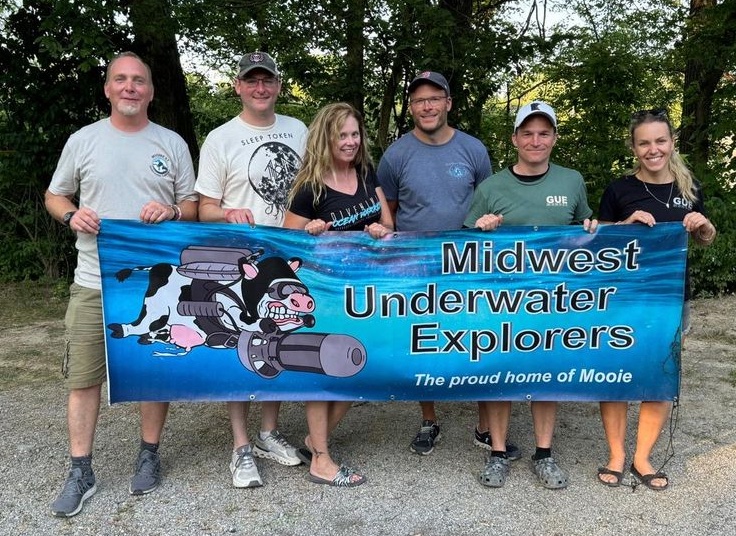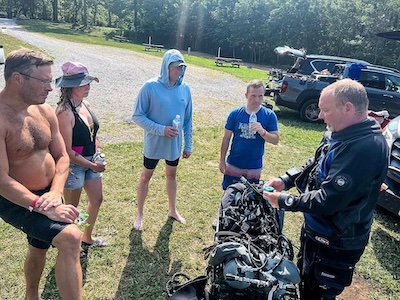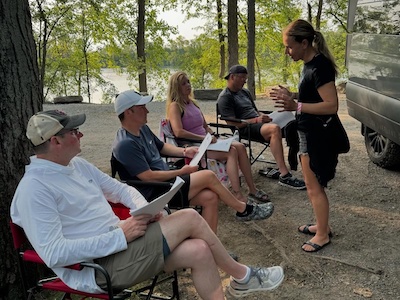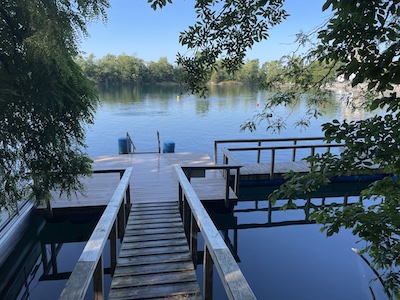GUE Fundamentals: My Experience, Gear, Skills, and Results

The GUE Fundamentals course (often called "Fundies") is a respected scuba class that bridges the gap between basic recreational training and high precision team diving. Whether you want to sharpen technique, enter the GUE system, or understand what disciplined team diving feels like, Fundamentals is a unique challenge with a high standard.
This page explains the Recreational and Technical paths, the required gear and skills, typical costs, and what my 4-day course looked like. I include real instructor feedback and practical tips so you can prepare effectively.
Note (Updated for 2025):
As of December 2024, GUE split Fundamentals into two tracks - Recreational and Technical. This post covers my experience in the pre-2025 combined version, but most details still apply to both paths.
"Fundies" is how trained divers enter the GUE system. Passing the Recreational track grants certification equivalent to Open Water Diver and Nitrox. GUE skill standards are significantly higher than most entry level certifications.
GUE Fundamentals is a strong option for recreational divers who want better trim, buoyancy, and team skills. Many divers take it even if they do not plan to continue in the GUE system.
- Identify and fix trim or buoyancy issues
- Experience effective team diving
- Receive detailed performance feedback
GUE Fundamentals is typically a 4-day course with classroom work, surface skills, gear configuration, in-water drills, and post-dive video debriefs. It is performance based, which means you pass only when you meet the required standard.
By the end of the course, you should be able to:
- Hold solid horizontal trim and buoyancy throughout the dive
- Demonstrate propulsion techniques (frog, back, helicopter turns)
- Deploy a backup mask and dSMB
- Perform gas sharing (S-drill) with awareness
- Execute a valve drill
- Communicate and problem solve effectively with your team
Fundamentals offers two outcomes:
- Recreational Pass: You meet the standard for controlled diving with a single tank. This supports GUE Recreational classes like Rec 2 and community dives.
- Technical Pass: You meet a higher bar in doubles that qualifies you for GUE Tech 1. This includes steady buoyancy, valve drill proficiency in doubles, and canister light use with a Goodman handle.
Many experienced divers receive a Rec pass on the first attempt. The Tech pass requires consistent mastery under task load.
- GUE registration fee: ~95 USD
- Instructor tuition: ~900 USD
- Shared instructor expenses: ~500 USD
- Total: ~1,500 USD
This is similar to taking Open Water, Nitrox, Navigation, Night, Drysuit, and Peak Performance Buoyancy as separate classes.
Fundamentals requires gear that meets GUE standards. Jacket BCDs, split fins, and dangling accessories are not allowed. If you do not already dive a backplate and long hose setup, plan to rent or borrow gear.
- Backplate and wing with continuous harness (no quick release buckles)
- Five D-rings (left and right chest, left hip, butt, crotch)
- Technical fins
- Backup mask
- Wetsuit or drysuit with pockets (or tech shorts)
- Long hose reg and necklaced backup plus analog SPG
- Dive computer (no or disabled air integration)
- Compass, primary light, backup light
- dSMB and spool, wetnotes
It is demanding by design. Expect personal video reviews and precise feedback on positioning, awareness, and execution. The workload is high, but the payoff can be significant.
- Build cardio and leg strength
- Practice both swim tests before class
- Ask a GUE diver for feedback if you plan to attempt a Tech pass

What a 4-Day GUE Fundamentals Class Looks Like
Every GUE Fundamentals class follows a common structure, but the order and pace vary with location, weather, and student skill.
My class was taught by Emoke Wagner (cave) and Francesco Cameli (tech and wreck). We logged more than 6 hours underwater across 4 days, with one dive at 83 minutes. These were not sightseeing dives. Every dive stacked new tasks, challenges, and coaching.

Day 1: Classroom, Gear Setup, First Dive
- Paperwork and intro classroom session
- Gear overview and reconfiguration
- Dive 1
- GUE EDGE pre-dive briefing
- Weight checks (I removed 30% of my normal weight)
- Baseline skills evaluation
- Feedback:
- Keep your head up
- Stop with the happy feet
- Additional class session
Day 2: Swim Tests and Basic 5 Skills
Emoke knew I would be diving Lake Michigan in a drysuit and encouraged me to switch for the rest of class, even though I had fewer than 10 dives in it.

- Classroom session
- Underwater swim test (50 ft) - failed, then passed
- Surface swim (300 yards in 14 min) - completed in 6 min
- Nitrox and O2 analysis (32% standard)
- Dive 2
- Improve kicks
- First run of the Basic 5:
- Mask clear
- Mask removal and replacement
- Reg in and out
- Switch to backup
- Long hose donation
- Feedback:
- Keep your head up
- Do not T-Rex your arms
- Dive 3
- Repeat kicks and Basic 5
- First valve drill (I failed)
- Feedback:
- Head up again
- Arms out again
- Back kick needs work
- Underwater video review
Day 3: Midpoint Eval, Valve Drills, S-Drill
- Mid-class evaluation:
- Great attitude
- More team awareness needed
- Improve trim under load
- Rec pass still on the table
- Dive 4
- Francesco switched fins with me to test for cramping causes
- Repeat kicks and Basic 5
- Valve drill (failed again)
- No mask swim (buddy feedback for steering me into things)
- Feedback:
- Head and arms still need work
- Back kick improving
- Fins and rock boots likely contributing to stiff kicks and cramps
- S-drill introduced
- Dive 5
- First S-drill attempt
- Feedback:
- Better head position
- Trim improving
- Happy feet still present, but improving
Day 4: Final Skills, Exam, Certification
I was mentally and physically exhausted by day 4 and considered stopping. Emoke encouraged me to continue since I needed one more dive to finish the class and earn at least a provisional if not a pass.

- Final written exam:
- No joke - required written answers and showing your work. I passed.
- Underwater video review
- Dive 6
- Continue improving kicks
- Valve drill (success)
- S-drill again
- Backup mask deployment
- dSMB deployment and ascent
- Feedback:
- Excellent team awareness
- Buoyancy on ascent still needs work
- Dive 7
- dSMB deployment and ascent
- dSMB deployment and ascent
- dSMB deployment and ascent
- Feedback:
- Much better buoyancy control
Instructor Feedback Summary
- You PASSED
- Great attitude through the entire class
- Took feedback without excuse or pushback
- Glad to see a switch to drysuit on day 2 despite the learning curve
- Excellent teammate with good situational awareness
- Material improvement from day one to day four
- Francesco suggested more buoyancy and kick practice at platforms to reduce happy feet

GUE Fundamentals Final Evaluation
Tyler is a committed diver who improved during the 4 days. He delivered a solid performance and acted as an excellent teammate. Tyler developed a strong platform for recreational diving. Kicks are generally clean, drills and procedures are precise, and awareness exceeded minimum standards. Trim should be more consistent when task loaded by holding core tension and avoiding fin tips dropping. Tyler tends to drop his head and is aware of it. Buoyancy on ascents with and without task load needs practice to build timing for venting drysuit gas. We recommend more flexible fins such as OMS Slipstreams, Hollis F1, or Jetfins. Consider a backplate change since the waist strap rides low.